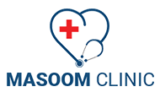ACUPUNCTURE

ACUPUNCTURE
Services available:
Proper diagnosis, medical treatment, Medication education, Needle insertion, Needle manipulation, Needle removal
F.A.Q
Acupuncture involves the insertion of very thin needles through your skin at strategic points on your body. A key component of traditional Chinese medicine, acupuncture is most commonly used to treat pain. Increasingly, it is being used for overall wellness, including stress management.
Traditional Chinese medicine explains acupuncture as a technique for balancing the flow of energy or life force — known as chi or qi (chee) — believed to flow through pathways (meridians) in your body. By inserting needles into specific points along these meridians, acupuncture practitioners believe that your energy flow will re-balance.
In contrast, many Western practitioners view the acupuncture points as places to stimulate nerves, muscles and connective tissue. Some believe that this stimulation boosts your body’s natural painkillers.
(Source: Mayo Clinic)
Acupuncture is used mainly to relieve discomfort associated with a variety of diseases and conditions, including:
Chemotherapy-induced and postoperative nausea and vomiting
Dental pain
Headaches, including tension headaches and migraines
Labor pain
Low back pain
Neck pain
Osteoarthritis
Menstrual cramps
Respiratory disorders, such as allergic rhinitis
(Source: Mayo Clinic)
Acupuncture is done using hair-thin needles. Most people report feeling minimal pain as the needle is inserted. The needle is inserted to a point that produces a sensation of pressure or ache. Needles may be heated during the treatment or mild electric current may be applied to them. Some people report acupuncture makes them feel energized. Others say they feel relaxed.
Improper placement of the needle can cause pain during treatment. Needles must be sterilized to prevent infection. That is why it is important to seek treatment from a qualified acupuncture practitioner. The FDA regulates acupuncture needles just as it does other medical devices under good manufacturing practices and single-use standards of sterility.
Instead of needles, other forms of stimulation are sometimes used over the acupuncture points, including:
- Heat (moxibustion)
- Pressure (acupressure)
- Friction
- Suction (cupping)
- Impulses of electromagnetic energy
(Source: Johns Hopkins Medicine)
Acupuncture points are believed to stimulate the central nervous system. This, in turn, releases chemicals into the muscles, spinal cord, and brain. These biochemical changes may stimulate the body’s natural healing abilities and promote physical and emotional well-being.
National Institutes of Health (NIH) studies have shown that acupuncture is an effective treatment alone or in combination with conventional therapies to treat the following:
- Nausea caused by surgical anesthesia and cancer chemotherapy
- Dental pain after surgery
- Addiction
- Headaches
- Menstrual cramps
- Tennis elbow
- Fibromyalgia
- Myofascial pain
- Osteoarthritis
- Low back pain
- Carpal tunnel syndrome
- Asthma
It may also help with stroke rehabilitation.
(Source: Johns Hopkins Medicine)
Acupuncture points are believed to stimulate the central nervous system. This, in turn, releases chemicals into the muscles, spinal cord, and brain. These biochemical changes may stimulate the body’s natural healing abilities and promote physical and emotional well-being.
National Institutes of Health (NIH) studies have shown that acupuncture is an effective treatment alone or in combination with conventional therapies to treat the following:
- Nausea caused by surgical anesthesia and cancer chemotherapy
- Dental pain after surgery
- Addiction
- Headaches
- Menstrual cramps
- Tennis elbow
- Fibromyalgia
- Myofascial pain
- Osteoarthritis
- Low back pain
- Carpal tunnel syndrome
- Asthma
It may also help with stroke rehabilitation.
In 2003, the World Health Organization (WHO) listed a number of conditions in which they say acupuncture has been proven effective.
These include:
- high and low blood pressure
- chemotherapy-induced nausea and vomiting
- some gastric conditions, including peptic ulcer
- painful periods
- dysentery
- allergic rhinitis
- facial pain
- morning sickness
- rheumatoid arthritis
- sprains
- tennis elbow
- sciatica
- dental pain
- reducing the risk of stroke
- inducing labor
Other conditions for which the WHO say that acupuncture may help but more evidence is needed include:
- fibromyalgia
- neuralgia
- post-operative convalescence
- substance, tobaccor and alcohol dependence
- spine pain
- stiff neck
- vascular dementia
- whooping cough, or pertussis
- Tourette syndrome
The WHO also suggest that it may help treat a number of infections, including some urinary tract infections and epidemic hemorrhagic fever.
